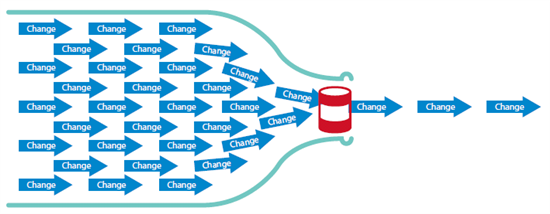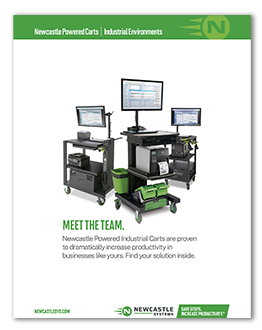
When you run a warehouse, you know that one inefficient process can create a bottleneck that can slow down everything. A warehouse staff is rated on how accurately it can handle orders and how well it can organize product, and there are plenty of issues that come with even routine warehouse management processes.
Warehouse management is a difficult job that requires years of experience and the right tools. You need to know every detail about how your warehouse operates if you want to be able to control productivity and accuracy. To be able to fix the most common warehouse management issues, you need to be aware of every link on your supply chain within the warehouse and know how to anticipate the needs of your customers.
Product Organization
Your supply chain monitoring begins the moment a product is received into the warehouse and put in its proper stocking bin. Maintaining an organized warehouse means putting the most popular products within reach, and having systems in place to find everything you need. Over time, a warehouse can become disheveled and the lack of organization is going to cause problems with your efficiency.
There are two solutions required to keep a warehouse organized. The first is to do regular trainings with your warehouse staff on the importance of keeping the warehouse organized, and using the tools in place to keep the inventory system up to date. Keeping the warehouse organized becomes part of the corporate culture when it is the subject of mandatory training sessions.
The other solution to maintaining an organized warehouse is to have strong systems in place that employees use to check-in and pick products. If your underlying systems are inefficient, then you will never be able to keep your warehouse organized. You need to stay up to date on the latest technology and be prepared to invest in whatever tools you need to keep your warehouse management process streamlined and efficient.
Receiving Processes
If your receiving process is inefficient, then nothing else in your warehouse will work properly. When products get checked-in that are not part of a purchase order or do not have their full documentation, then it is difficult to properly store these products in your warehouse. Receiving damaged product or receiving orders that are incomplete costs you money and creates chaos with the rest of your warehouse management system.
You need a reliable quality control method attached to your receiving process that ensures that every order and product is accounted for properly. The QC method will have checklists to work from that must be satisfied before a product can be received. There will be a comprehensive method in place for handling damaged or missing product, and there will be a software platform used that keeps everyone in the receiving, purchasing, and quality control segments updated on every issue being handled.
Stocking
Stocking is another critical part of receiving that can often get taken for granted. If you take the time to properly receive product but have no comprehensive stocking system in place, then product can get lost and orders will not get filled. Too many warehouse management systems allow products to be subjected to generic stocking procedures that adhere to a loosely-maintained shelf and bin marking system. Without a proper stocking process in place, your warehouse can turn into chaos.
The key to efficient stocking is to develop comprehensive marking systems for shelves and bins. Color-coding each part can help to speed up the picking process, but the ultimate solution lies in keeping track of each bin and having a system in place for efficiently stocking products. In a well-managed warehouse, a picker should know exactly where to go to get any product, and the inventory system should give an accurate count as to the number of products available.
Layout
The manner in which you layout your warehouse significantly effects efficiency. There are many different ways to organize a warehouse, but the best way for your warehouse is the one that makes picking and stocking products safe and easy. If you constantly have bottlenecks in the picking or receiving portions of your operation, then you need to improve the layout of your warehouse.
For some warehouse managers, an efficient layout means shelves are stocked from the back and picked from the front. You need to monitor warehouse traffic flow and keep an eye on where the most popular products are stored. Over time, an efficient layout is one that allows the stocking personnel to do their job without interfering with the work of the picking crew.
Lack of Automation
Automating a warehouse with efficient barcode systems and inventory control platforms is expensive, but it pays for itself over and over again. A warehouse without the proper automation is printing several pick tickets for the same order, unable to match purchase orders with packing lists properly, and is spending too much on inventory because it is unable to keep accurate count of what products are being sold at various times of the year.
A barcode system eliminates the need for multiple printed pick tickets and an effective inventory control system makes it easy to compare company purchase orders against delivery packing lists. With automation, your warehouse becomes more efficient and cuts down on wasteful and redundant processes.
Warehouse management is a complicated process that requires the right tools and experienced people. But when a warehouse is properly managed, it is efficient and lowers its cost burden against the company's bottom line.











